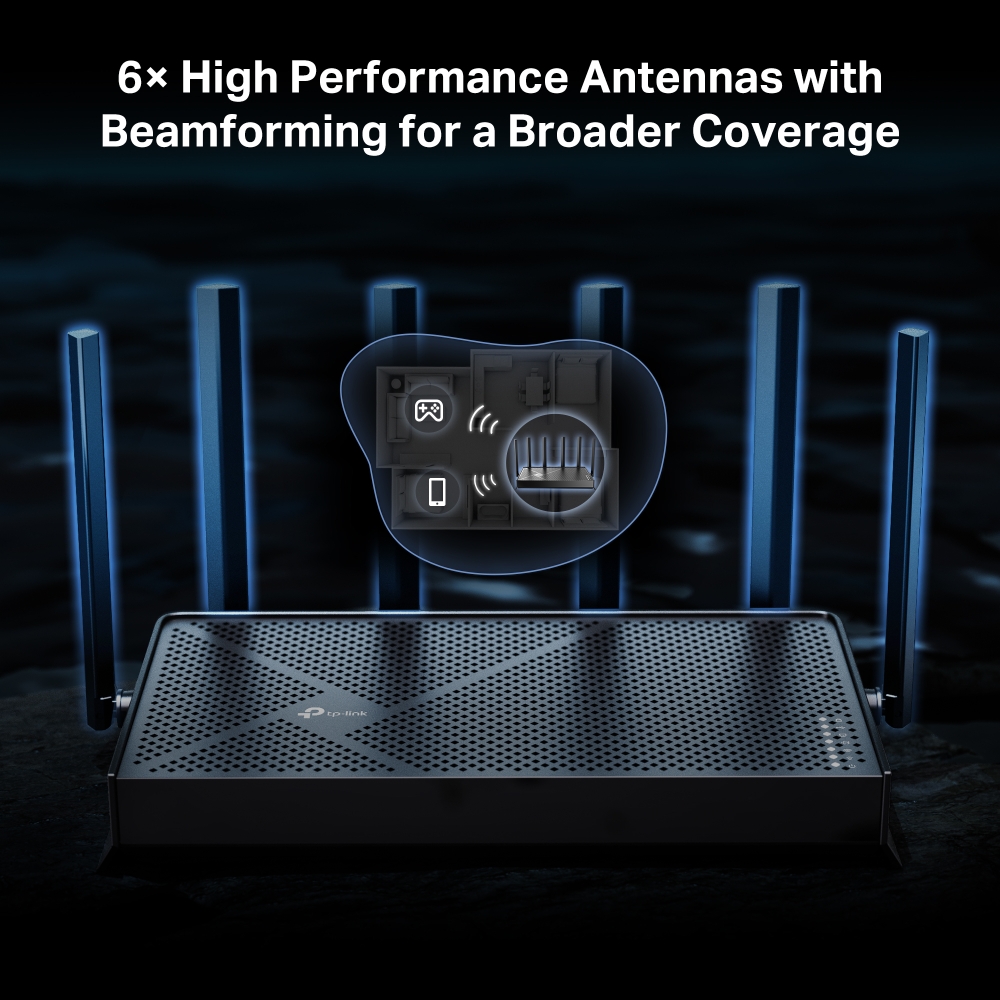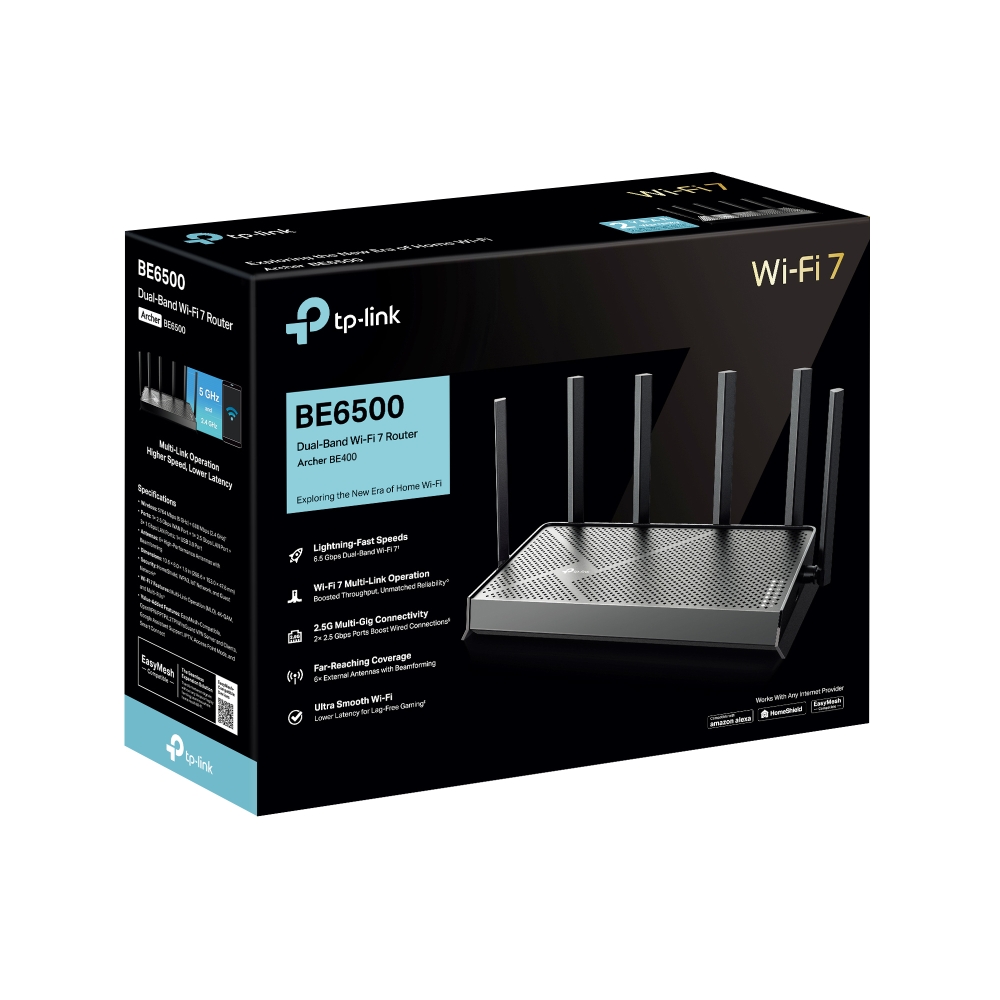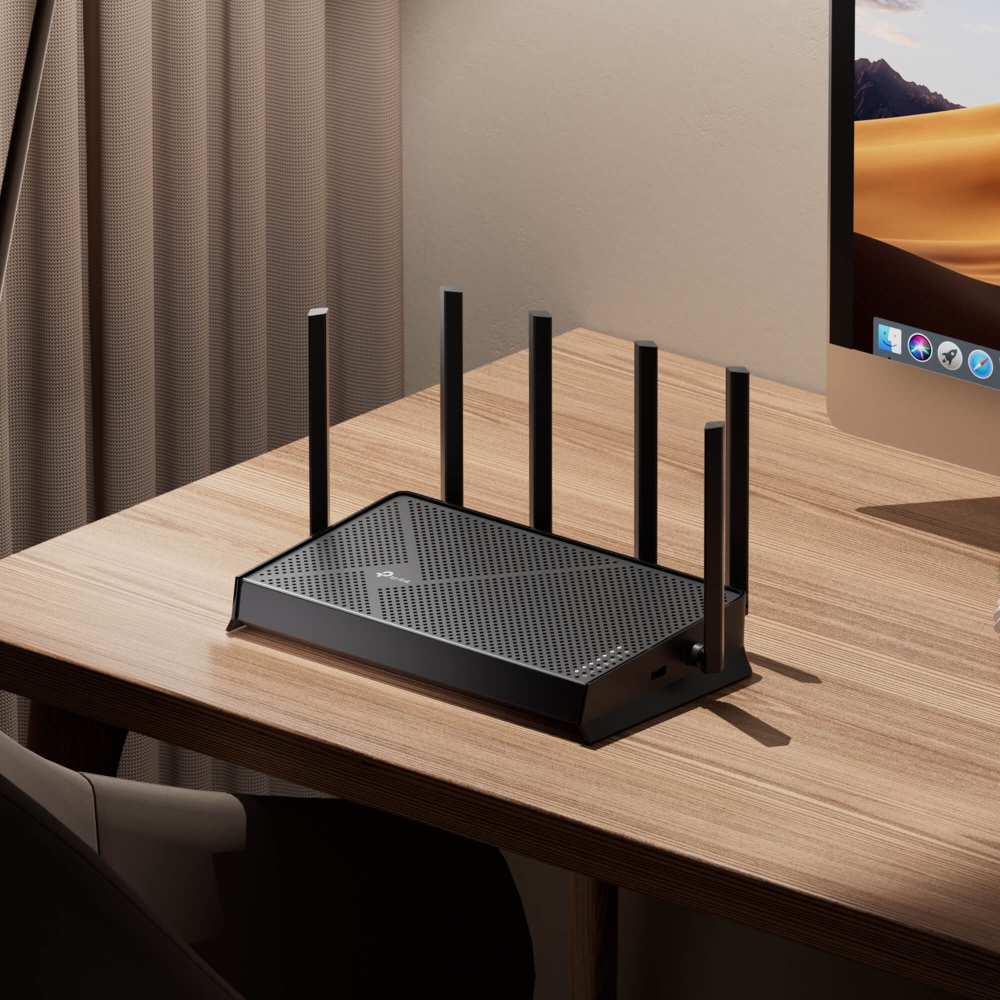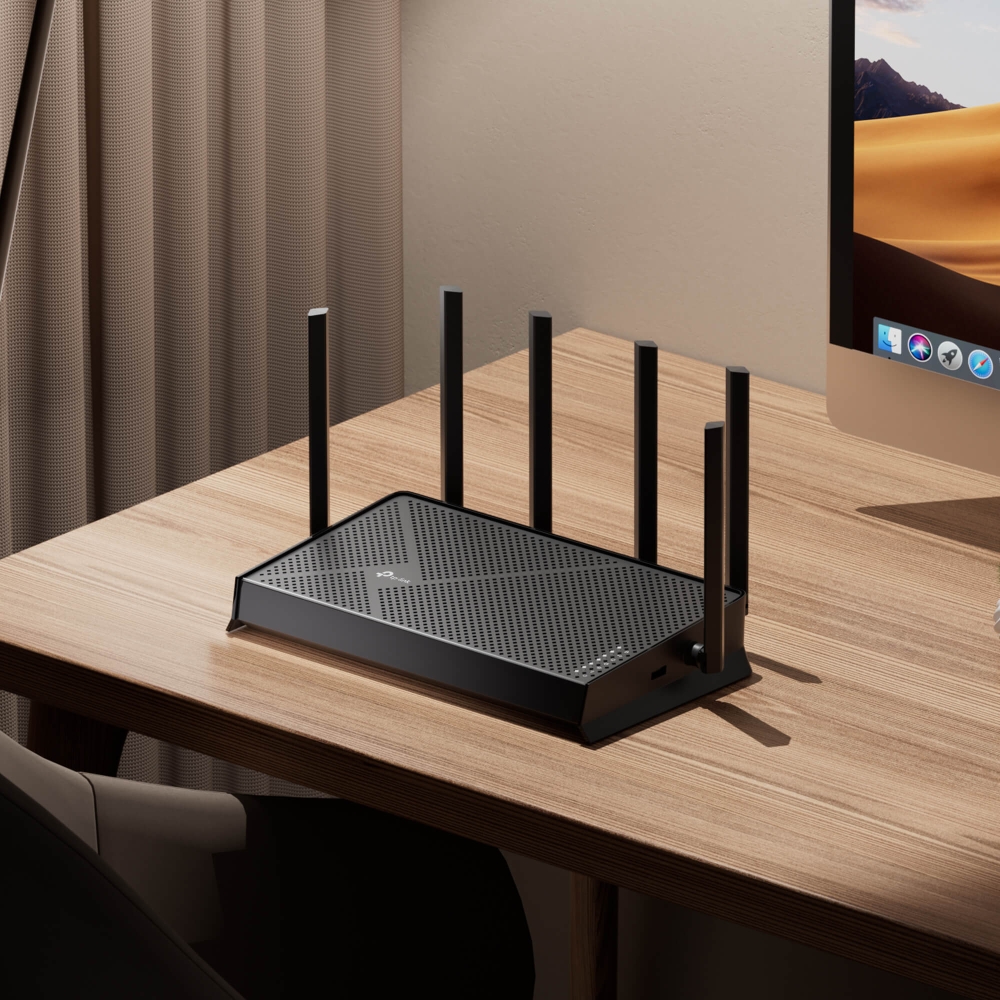The TP-Link Archer BE6500 is a powerful dual-band Wi-Fi 7 router designed for high-speed internet access and extensive network coverage. Its impressive specifications, including dual 2.5 Gbps ports, a quad-core CPU, and HomeShield security, make it a compelling choice for modern homes and businesses. This review dives deep into its features, performance, and security capabilities, providing a comprehensive understanding of this advanced networking solution.
This router stands out with its combination of speed, coverage, and security features. Its quad-core CPU and Wi-Fi 7 standard contribute to its high performance, allowing for seamless streaming, gaming, and multiple device connectivity. The dual 2.5 Gbps ports offer exceptional wired connection speed, while the HomeShield security suite provides robust protection against potential threats. This router promises a superior home network experience.
Overview and Specifications
The TP-Link Archer BE6500 is a high-performance dual-band Wi-Fi router designed for homes needing robust and reliable connectivity. It boasts impressive speed capabilities, multiple Gigabit Ethernet ports, and security features to protect your network. This detailed overview will explore its key specifications, highlighting its strengths and capabilities.The Archer BE6500 offers a comprehensive solution for modern home networking needs, providing both high-speed data transfer and enhanced security protocols.
Its advanced features and specifications make it a strong contender in the market for home networking devices.
Key Features
The TP-Link Archer BE6500 stands out with its combination of speed, connectivity options, and security features. This section will provide a concise overview of these critical components.
- Dual-band Wi-Fi (2.4GHz and 5GHz): This allows simultaneous connections on both bands, providing better performance and minimizing interference. This is especially helpful in crowded Wi-Fi environments.
- High-speed data transfer: The router supports speeds up to 2.4 Gbps, enabling faster file sharing and streaming for multiple devices.
- Multiple Gigabit Ethernet ports: The router’s multiple Gigabit Ethernet ports support fast wired connections, ideal for gaming or video streaming.
- Advanced security features: The HomeShield and Private IoT functionalities enhance network security, protecting connected devices from potential threats.
- Extensive coverage: The router’s design is optimized for homes up to 2,400 sq. ft, ensuring seamless connectivity across the entire area.
Technical Specifications
This section details the technical specifications of the TP-Link Archer BE6500. A table format is used for easier comprehension and comparison.
| Feature | Description | Technical Specifications |
|---|---|---|
| Processing Unit | Central processing unit (CPU) | Quad-core CPU |
| Wi-Fi Standards | Wireless networking standards supported | 802.11ac, 802.11n |
| Gigabit Ethernet Ports | Number and type of Ethernet ports | Four Gigabit Ethernet ports, one 2.5 Gbps port |
| USB Port | USB port type and speed | USB 3.0 port |
| Maximum Coverage Area | Estimated coverage area | Up to 2,400 sq. ft |
| Maximum Supported Devices | Approximate number of devices that can connect | Up to 90 devices |
Performance and Capabilities
This section delves into the performance characteristics of the TP-Link Archer BE6500, evaluating its speed, coverage, and capacity to handle a multitude of devices. It provides a comparative analysis with similar routers, highlighting key strengths and potential limitations.The Archer BE6500 is designed for high-speed data transfer and robust network management. Its performance directly impacts the user experience, particularly in scenarios with multiple users and demanding applications.
Speed and Coverage
The Archer BE6500’s dual-band Wi-Fi technology enables simultaneous connections on both 2.4 GHz and 5 GHz bands, delivering high speeds for various tasks. Its theoretical maximum speeds are impressive, but real-world performance can vary based on factors like distance from the router, interference, and device capabilities. Coverage up to 2,400 sq. ft is a significant advantage, especially for larger homes or offices.
However, the actual coverage range may vary based on physical obstacles and building materials.
Handling Multiple Devices
The router’s ability to manage numerous devices concurrently is a critical aspect of its performance. The claimed support for up to 90 devices suggests its suitability for households or small businesses with many networked devices. However, practical performance depends on the types of devices connected, their individual bandwidth requirements, and the router’s overall processing capacity. Real-world testing and user feedback are crucial in determining the router’s effectiveness in handling a large number of devices simultaneously.
Comparison to Similar Routers
To provide context, a comparison of the TP-Link Archer BE6500 to other comparable routers is presented below. This table highlights key features like maximum speed, coverage area, and maximum simultaneous device support.
| Router Name | Maximum Speed (Mbps) | Coverage Area (sq. ft) | Maximum Simultaneous Devices |
|---|---|---|---|
| TP-Link Archer BE6500 | 2400 | 2400 | 90 |
| Netgear Nighthawk AX8 | 6000 | 2000 | 100 |
| ASUS RT-AX88U | 6000 | 2200 | 100 |
| Linksys Velop AX6000 | 6000 | 2500 | 100 |
Note: Specifications may vary based on manufacturer claims and real-world testing. Actual performance might differ based on factors like interference and distance from the router.
Features and Benefits
This section delves into the key features of the TP-Link Archer BE6500 router, highlighting how they contribute to enhanced user experience and robust network security. The router’s design balances high-speed connectivity with practical security measures, making it a suitable choice for various home networking needs.
Dual-Band Wi-Fi
The Archer BE6500 utilizes dual-band Wi-Fi, operating on both 2.4 GHz and 5 GHz frequencies. This dual-band approach allows for concurrent data transmission on both bands, minimizing interference and maximizing throughput. The 2.4 GHz band provides wider coverage, ideal for connecting devices further away from the router, while the 5 GHz band delivers faster speeds for demanding tasks like streaming high-definition video or playing online games.
This dual-band functionality ensures a smooth and reliable connection for all connected devices.
USB 3.0 Port
The USB 3.0 port facilitates high-speed data transfer, enabling the router to act as a network storage device. Users can connect external hard drives or printers directly to the router, making files easily accessible across the network. This feature provides convenient file sharing and printing capabilities for all connected devices.
HomeShield Security
HomeShield is a comprehensive security suite designed to protect users from online threats and vulnerabilities. It offers a range of protective features to safeguard the network, including intrusion prevention, parental controls, and device management. HomeShield provides a centralized platform to monitor and manage all connected devices, helping to maintain a secure network environment. Its purpose is to detect and block unauthorized access, ensuring the safety and privacy of personal data.
The functionality encompasses a proactive approach to network security, providing real-time monitoring and threat mitigation.
Pros and Cons
| Feature | Pros | Cons |
|---|---|---|
| Dual-Band Wi-Fi | Enhanced coverage and speed; minimizes interference. | May require specific configuration for optimal performance. |
| USB 3.0 Port | High-speed data transfer; network storage capabilities. | Requires compatible devices for optimal usage. |
| HomeShield Security | Centralized security management; Intrusion prevention; Parental controls; Device management. | Requires additional setup and configuration; Feature effectiveness depends on the device’s compatibility. |
Setup and Configuration
Setting up your new TP-Link Archer BE6500 router is a straightforward process. This section details the steps involved, ensuring a smooth transition from unboxing to a fully functional network. The user-friendly interface contributes significantly to a positive setup experience.The router’s intuitive design makes it easy to configure your network settings, even for less experienced users. The setup process is streamlined, minimizing potential complications and maximizing your Wi-Fi experience.
Connecting to the Modem
Connecting the router to your existing modem is the first step in establishing your home network. This involves plugging the Ethernet cable from your modem’s output port to the router’s WAN port. Then, connect the power adapter to the router and plug it into a power outlet. Ensure that the router is properly connected to the modem before proceeding with the network configuration.
Initial Network Configuration
After successfully connecting the router, the next crucial step involves configuring the network settings. This includes providing the necessary information for your router to communicate with your ISP and other devices.
Step-by-Step Basic Configuration Guide
- Power On and Connect: Turn on the router and connect it to your modem using an Ethernet cable. Connect the power adapter to the router and a power outlet.
- Access the Router’s Web Interface: Open a web browser on a computer or mobile device connected to the router’s network. In the address bar, type the router’s default IP address (usually 192.168.1.1). Enter the username and password. These are often found on the router’s label or in the documentation.
- Network Name and Password: Create a unique network name (SSID) and a strong password for your Wi-Fi network. This crucial step ensures security and prevents unauthorized access.
- DHCP Configuration: If you’re using DHCP, the router will automatically assign IP addresses to devices on your network. If you need to manually configure IP addresses, select the appropriate option.
- Security Settings: Enable WPA2 or WPA3 encryption for your Wi-Fi network to secure your connection. This is highly recommended to prevent unauthorized access.
- Firewall Configuration: Review and adjust firewall settings to protect your network from unwanted intrusions. This step allows you to tailor your network security based on your needs.
- Save and Apply Changes: Click the “Save” or “Apply” button to save the changes you’ve made to the router’s settings. The router will then reboot to implement these changes.
- Device Connection Verification: Connect your devices to the newly configured Wi-Fi network using the SSID and password. Verify that all devices are connected and functioning correctly.
Security and Privacy
The TP-Link Archer BE6500 prioritizes network security with robust features, particularly its HomeShield suite. This comprehensive security system helps protect your home network and personal data from potential threats. This section will detail the security measures in place and best practices for optimal protection.
HomeShield Overview
TP-Link’s HomeShield is a suite of security features designed to safeguard your home network. It offers a layered approach to security, covering various aspects from intrusion prevention to protecting connected devices. The core concept is to create a secure environment for your home network, which is particularly important in today’s interconnected world where smart devices and IoT devices are common.
Protecting User Data and Privacy
The router actively monitors network traffic for suspicious activities, and alerts you to potential threats. It enforces privacy controls on connected devices, limiting unauthorized access and safeguarding your personal information. This proactive approach to security significantly reduces the risk of data breaches and unauthorized access.
Securing the Router: Best Practices
Strong passwords are crucial for network security. Choose a password that is difficult to guess, combining uppercase and lowercase letters, numbers, and symbols. Avoid using easily guessable information, such as birthdays or names. Regularly change your router’s password to maintain optimal security. Implementing strong passwords is the first line of defense against unauthorized access.
Encryption Methods
Robust encryption protocols are essential to protect your network communications. The router supports various encryption standards, ensuring secure data transmission between devices on your network. This prevents eavesdropping and unauthorized access to sensitive data.
Supported Security Protocols:
- WPA2-PSK (Wi-Fi Protected Access 2 – Pre-Shared Key): A widely used security protocol offering a balance of security and ease of use.
- WPA3-PSK (Wi-Fi Protected Access 3 – Pre-Shared Key): A more advanced protocol providing enhanced security compared to WPA2, offering more robust protection against modern attacks.
Additional Security Measures
The router employs various security measures beyond encryption and password protection. These additional measures contribute to a comprehensive security strategy, protecting your network from various threats. They include, but are not limited to, intrusion prevention systems and firewall capabilities.
Use Cases and Applications

The TP-Link Archer BE6500 offers a robust platform for diverse home networking needs. Its high bandwidth, extensive coverage, and advanced security features make it suitable for a wide range of applications, from everyday internet usage to demanding tasks like gaming and video streaming. This section explores the router’s suitability across various home environments.
Gaming Performance
The Archer BE6500’s exceptional speed and low latency make it an excellent choice for gamers. With its dual-band Wi-Fi and 2.5 Gbps ports, it can handle high-bandwidth gaming applications without lag or buffering. This is particularly beneficial in large homes where network congestion is a common issue. Consistent high-speed connections are essential for online multiplayer games and competitive gaming environments.
Fast, reliable speeds are key for minimizing lag, ensuring a smooth and enjoyable gaming experience.
Streaming and Media Consumption
For households with multiple users streaming high-definition video content simultaneously, the Archer BE6500’s substantial bandwidth is critical. The router’s ability to handle numerous devices simultaneously minimizes buffering and ensures a seamless streaming experience. The 2.5 Gbps ports are ideally suited for high-bandwidth content delivery. This feature is invaluable in homes with multiple members engaging in video streaming, online gaming, or other bandwidth-intensive activities.
Large Home Networks
The Archer BE6500’s expansive coverage and robust processing power are essential for large homes with multiple devices. Its advanced features help to manage the network traffic effectively, preventing congestion and ensuring a stable connection for every device. In such environments, reliable and consistent connectivity for numerous devices is crucial. The router’s ability to handle a high device count makes it suitable for homes with a large number of smart devices, computers, and other connected devices.
Specific Home Environments
The router’s capabilities are well-suited for specific home environments where network performance is paramount. A home with multiple streaming devices or high-bandwidth gaming systems benefits greatly from the router’s capacity to handle simultaneous high-bandwidth tasks. For example, a home with multiple members engaging in online gaming or streaming high-definition videos simultaneously will experience superior performance and minimal lag.
The extensive coverage ensures reliable connectivity throughout the entire home.
Troubleshooting and Support

This section details common issues users might encounter with the Archer BE6500 router, providing troubleshooting steps and tips for optimizing performance. It also Artikels the support resources available to users. Proper troubleshooting can prevent frustration and ensure optimal network functionality.Effective troubleshooting requires a systematic approach. Understanding the problem and its potential causes is crucial before implementing solutions.
This section aims to equip users with the knowledge to diagnose and resolve common router issues efficiently.
Common Connectivity Issues and Solutions
A stable internet connection is paramount. Several factors can lead to connectivity problems, such as outdated firmware, signal interference, or physical obstructions.
- Wireless Connectivity Problems: If devices aren’t connecting to the Wi-Fi network, ensure the router is powered on and connected to the internet. Check the signal strength and distance between the router and the device. Also, verify that the device’s Wi-Fi settings are correctly configured to match the router’s SSID and password.
- Wired Connectivity Problems: If wired devices aren’t connecting, verify that the Ethernet cables are securely plugged into both the router and the device. Check the cable’s integrity and try a different cable if necessary. Ensure the ports on the router are functional and not experiencing issues.
- Interference Issues: Interference from other Wi-Fi networks or electronic devices can disrupt the signal. Try moving the router to a location less prone to interference, or consider using a different channel for the Wi-Fi network.
Performance Optimization Tips
Optimizing the router’s performance can enhance the speed and reliability of the network. Consider these strategies:
- Firmware Updates: Keeping the router’s firmware updated is essential. Outdated firmware may have vulnerabilities or performance limitations. Regular firmware updates often include performance enhancements and bug fixes.
- Network Configuration: Adjusting network settings can significantly improve performance. Use QoS (Quality of Service) to prioritize specific traffic if necessary. Adjusting the Wi-Fi channel and band can also help to minimize interference.
- Device Management: Monitor network usage to identify potential bottlenecks. Identify and disconnect devices that are consuming excessive bandwidth. Consider using a network monitoring tool to gain insights into traffic patterns and potential performance issues.
Support Resources
TP-Link provides various support resources to assist users in resolving issues.
- Online Documentation: The TP-Link website offers comprehensive documentation, including FAQs, manuals, and troubleshooting guides for the Archer BE6500. This can provide solutions to many common problems.
- Community Forums: Online communities provide a platform for users to connect, share experiences, and receive assistance from other users and TP-Link support personnel. These forums often offer valuable insights and workarounds for specific issues.
- Customer Support: TP-Link offers dedicated customer support channels. Contacting support can provide personalized assistance for complex or unique problems.
Visual Representation (Conceptual)

This section provides a conceptual visualization of the TP-Link Archer BE6500’s network coverage and device management. Understanding these visualizations will help users grasp the router’s capabilities and how it handles a diverse array of connected devices within a home network.A clear representation of the router’s coverage and its handling of multiple devices is crucial for effectively planning and utilizing the router’s features.
This visual approach aids in understanding the router’s performance and capacity.
Network Coverage Area
The router’s coverage area is depicted as a circular region, with the router positioned centrally. The circle’s radius represents the range, extending approximately 2,400 square feet. The area is shaded with varying intensities of a light teal color. The router itself is a small, light blue icon in the center. Darker shades of teal indicate the areas with stronger signal strength, while lighter shades represent areas where the signal strength is weaker.
The visual representation accurately reflects the potential for signal degradation based on physical obstructions, and the router’s capability to maintain a strong signal within the designated range.
Device Management Illustration
The illustration depicts the router managing multiple devices on the network. The router is a central hub, with lines radiating outwards, connecting to various devices. Each device is represented by a different colored icon (e.g., a laptop as a purple rectangle, a smartphone as a light green rectangle, a smart TV as a dark grey rectangle, a printer as a dark orange rectangle).
The thickness of the lines connecting the devices to the router visually represents the data transmission rate, with thicker lines corresponding to higher bandwidth requirements. The router is depicted with multiple, smaller, concentric circles around it to show the router’s capacity to handle numerous simultaneous connections. The illustration aims to convey the router’s ability to handle numerous devices effectively without compromising performance.
Summary
In conclusion, the TP-Link Archer BE6500 presents a compelling blend of speed, coverage, and security features. Its high-performance capabilities, coupled with its user-friendly setup and advanced security features, make it a top contender in the market. While the price point might be a consideration for some, the overall value proposition and robust performance make it a worthwhile investment for users seeking a reliable and high-performing home network.
Questions Often Asked
What are the common network issues users face with this router?
Common issues include poor Wi-Fi signal in certain areas, slow speeds, and connectivity problems with specific devices. Troubleshooting often involves checking signal strength, ensuring optimal placement, and updating firmware.
How does the HomeShield feature enhance network security?
HomeShield provides a private IoT network, enhancing security by isolating smart home devices and limiting their exposure to the broader network. This feature adds a layer of protection against potential vulnerabilities of connected devices.
What are some alternatives to the TP-Link Archer BE6500 in the same price range?
Alternatives may include models from Netgear, Asus, or other brands, offering similar Wi-Fi 6 or Wi-Fi 7 capabilities. Detailed comparisons often involve speed, coverage, and feature sets.
What is the maximum number of simultaneous devices this router can handle?
The router is advertised to support up to 90 simultaneous devices, although the actual number may vary based on device usage and network traffic.
What are the steps for basic router configuration?
The setup typically involves connecting the router to your modem, accessing the router’s web interface through a web browser, and configuring network settings, including Wi-Fi passwords.






